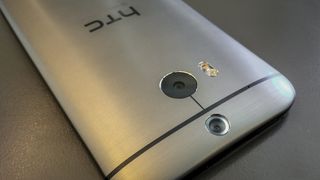No Motorola, the iPhone wasn’t the last big phone innovation
A lot has happened since 2007

A new TV ad for the modular Moto Z opens with a Steve Jobs-type walking out on stage holding up a black square and a voiceover stating, “Remember 2007? Smartphones - big, game-changing, oh-em-gee.”
It continues, “Now fast forward to today, nothing has really changed. The camera got a little better, the headphone jack moved, rose gold is a color – not an idea. It’s time to snap out of it, people.”
Motorola is wrong - it may feel like phones innovation has slowed down as no company has revolutionized the size or way we use our phones, but a lot has happened during nearly a decade since Apple released its first phone.
From hyper-fast connection to massively improved audio all the way to insane jumps in camera technology, we should be celebrating the fantastic levels of innovation that are packed into our pockets - trust us, there are more than a few.
4G internet
In 2007, being able to download a whole album onto your phone in a matter of seconds while travelling on a bus was a pipe dream. Now most of us stream any song we can conceive of directly into our ears without giving it a second thought.
We’ve grown so used to having high speed internet many are clamouring for the introduction of 5G technology as soon as possible to get faster download times and have an even more seamless connection.
The HTC Evo from 2010 was the first phone to boast the high-speed internet connectivity and every major flagship phone has embraced it ever since.
Get daily insight, inspiration and deals in your inbox
Get the hottest deals available in your inbox plus news, reviews, opinion, analysis and more from the TechRadar team.
4G has enabled us to stream high-definition video, download apps wherever we want and do everything much faster than ever before- that's definite innovation.
Front-facing speakers
It may seem like an afterthought now, but front-facing speaker tech forced a huge step forward in headphone-less audio performance on our phones in 2013.
The HTC One was the first phone to include the speaker tech - it really impressed at the time as you could watch movies, listen to music in the kitchen or share YouTube clips with chums with high quality audio with no need to cup the speakers to hear what’s going on.
Showing your friends this feature felt like a proper 'wow' moment for tech - some might argue it's not hugely necessary but it really felt like a leap forward to have our phones pumping out such great sound.
QHD displays
The original iPhone only had 165 pixels-per-inch on its screen (with a resolution of 320 x 480), but the LG G3 from 2014 came along with over three times more more at 538ppi (1440 x 2560). Phone screens have come a long way and QHD was a major turning point.
Sony one-upped QHD by releasing a 4K phone - the Xperia Z5 Premium with 806ppi (2160 x 3840)- but QHD has been widely embraced while the Ultra HD option hasn’t been seen anywhere else but on that phone.

Although initially seen as pointless, there have been benefits to having QHD displays on our phones apart from having better-looking video and pin-sharp web browsing - it’s perfect for virtual reality too. Our phone screens are now so good we can put them in a headset and disappear to other worlds.
The App Store
When the iPhone originally launched it was packing ‘apps’, but each was made by Apple and didn’t offer any functionality outside of Apple services or tasks such as the calculator or contacts.
Some app portals existed for Nokia phones, but these were rogue wastelands that offered a few Java games or timer apps - and were a nightmare to use.
Nine years later and everything you need to do in life is possible through a few taps and a speedy download. Finding love, finding what music is playing or working out what you want for dinner is now possible in no time at all, and it’s Apple’s App Store launched in 2008 (and the subsequent popularity of the Google Play Store) that changed how we use our phones forever.
High quality smartphone cameras
It’s easy to brush the updates to our phones aside, saying each camera tweak is a minimal upgrade, but the shooters on the back of our handsets have improved with higher resolutions, better low-light capabilities and tons of new features geared to amazing us with the quality of image that comes up.
A key moment of cameraphone innovation came with the HTC One M8 in 2014, which featured a 4MP ‘Ultrapixel’ camera. It may not sound like much by today’s standards, but it allowed for much better low-light shots and featured a dual sensor to give better depth to your photos - this was a true watershed moment and paved the way for the impressive dual sensors on the iPhone 7 Plus and the Huawei P9.

Selfies have also become a true cultural phenomenon since 2007 and the front-facing camera has been a massive change, forcing all phone manufacturers to rethink and put two cameras on every device out these days.
Gorilla Glass and durability
Phones of the past have been fragile and prone to breaking at the slightest bump, but the upgrades in the last few years to durability tech means your phone is much less likely to get damaged.
It’s not all about whether your phone can take a dip though - Corning’s Gorilla Glass has been a major step forward to help you phone survive knocks and drops as well.
It has given smartphones an even higher level of toughness to ensure the odd bump doesn’t ruin the device for good. According to Corning, the latest Gorilla Glass 5 protects your phone from 80% of drops at 1.6 meters - we don't like the original iPhone's odds at that height.
Your iPhone 7 can now also be dipped into water and survive, unlike your original iPhone. That’s a big step forward and the first to do so was the Sony Xperia Z back in 2013.
Even Motorola made what was called the “unbreakable” phone with the Moto X Force last year, which had a shatterproof display. That’s smartphone innovation, and this new advert from the brand shows it's not embracing even its own history.
So to say that the smartphone world is devoid of innovation is insane - we've seen some of the biggest technological advances crammed into tiny devices in the last decade, and it's not all just because of Apple.
James is Managing Editor for Android Police. Previously, he was Senior Phones Editor for TechRadar, and he has covered smartphones and the mobile space for the best part of a decade bringing you news on all the big announcements from top manufacturers making mobile phones and other portable gadgets. James is often testing out and reviewing the latest and greatest mobile phones, smartwatches, tablets, virtual reality headsets, fitness trackers and more. He once fell over.

